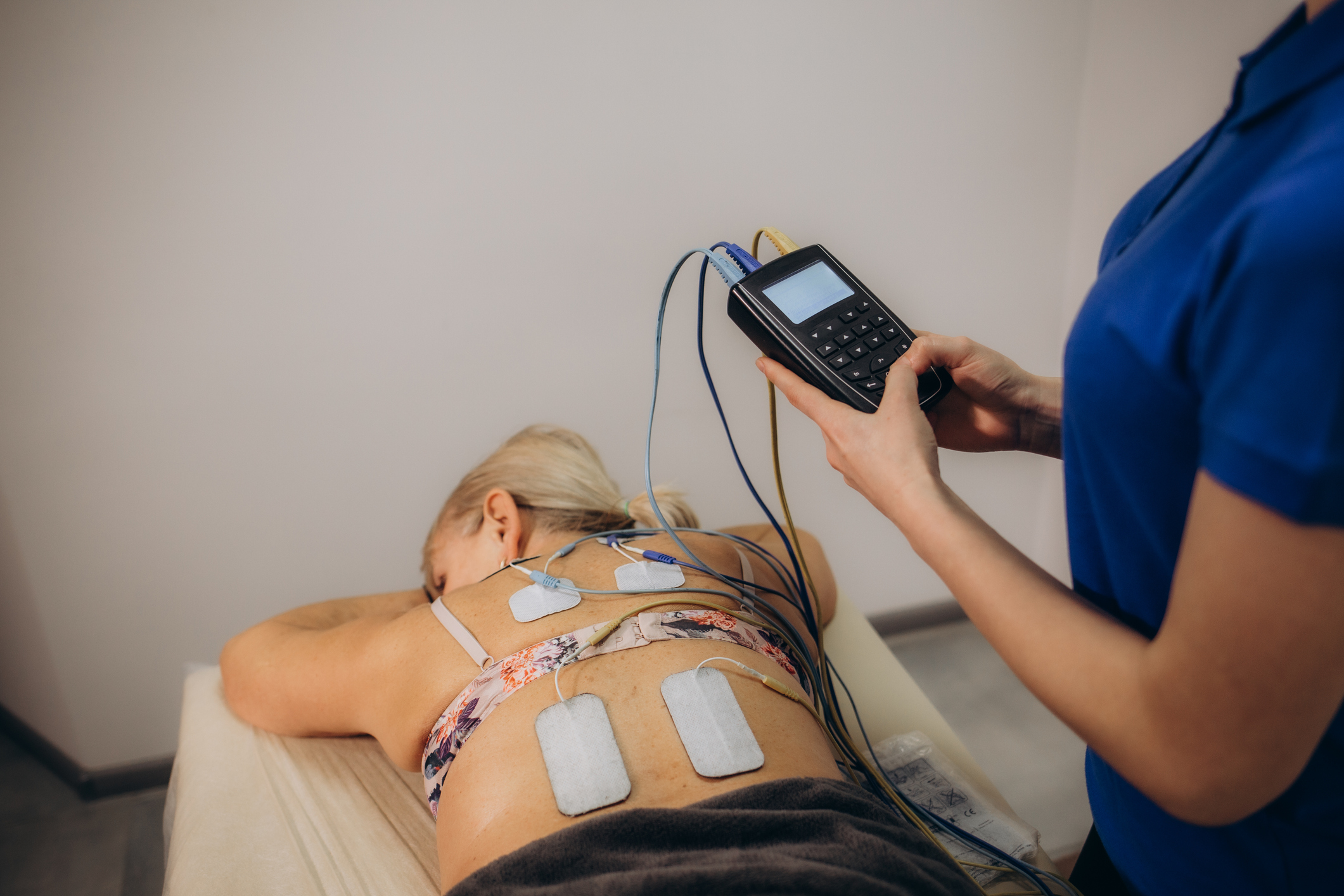Electrical Muscle Stimulation: 5 Important Sports Medicine Applications
Electrical Muscle Stimulation (EMS) is a therapeutic technique that uses low-voltage electrical currents to stimulate muscle contractions. This method works by sending impulses to motor neurons, causing the muscles to contract in a manner similar to natural voluntary movements. EMS has become a vital tool in sports medicine due to its ability to enhance recovery, strengthen muscles, and aid rehabilitation.
EMS devices typically consist of electrode pads placed on the skin over targeted muscle groups. The electrical currents penetrate the skin and stimulate underlying muscle fibers. The intensity and frequency of the stimulation can be adjusted to suit specific therapeutic goals, from pain relief to improving athletic performance.
Electrical Muscle Stimulation (EMS) in Sports Medicine: Applications and Benefits
In sports medicine, electrical muscle stimulation is used for various purposes, ranging from muscle recovery to injury prevention. Below are five key applications of EMS in sports medicine, with detailed insights into how this technology benefits athletes and aids their training or rehabilitation.
1. Enhancing Muscle Recovery
After intense training sessions or competitions, athletes often experience muscle soreness due to microtears in muscle fibers. Electrical muscle stimulation helps accelerate recovery by increasing blood flow to the affected muscles, which facilitates the removal of metabolic waste products such as lactic acid.
- How it Works:
Electrical muscle stimulation induces rhythmic muscle contractions that mimic the effects of active recovery exercises, promoting circulation without the need for physical effort. This allows athletes to recover faster while minimizing the risk of overtraining. - Benefits:
- Reduces muscle soreness (delayed onset muscle soreness, or DOMS).
- Speeds up the removal of waste products and replenishes oxygen and nutrients.
- Enhances relaxation and prevents stiffness in overworked muscles.
- Example in Sports:
In endurance sports like marathon running or cycling, EMS is frequently used after events to help athletes recover quickly and prepare for subsequent competitions.
2. Preventing Muscle Atrophy During Rehabilitation
Muscle atrophy, or the loss of muscle mass, often occurs during periods of immobilization following an injury. Athletes recovering from surgeries, fractures, or ligament tears can use EMS to maintain muscle strength and prevent significant atrophy.
- How it Works:
EMS stimulates inactive muscles, mimicking the natural contractions that occur during exercise. This prevents the muscles from weakening while they are not being actively used. - Benefits:
- Maintains muscle tone and prevents degeneration.
- Helps preserve neuromuscular connections, aiding a faster return to activity.
- Reduces the risk of re-injury by keeping muscles conditioned.
- Example in Sports:
Football players recovering from ACL injuries often use EMS to maintain quadriceps strength while minimizing strain on healing ligaments.
3. Improving Muscle Strength and Performance

Electrical muscle stimulation can be integrated into training programs to complement traditional strength training. By targeting specific muscle groups, EMS enhances the recruitment of muscle fibers, including those that are harder to activate through voluntary contractions alone.
- How it Works:
EMS devices deliver electrical impulses at higher intensities to stimulate deep muscle fibers that are typically underutilized. This leads to increased muscle strength and power. - Benefits:
- Activates a greater percentage of muscle fibers, improving overall muscle performance.
- Enhances explosiveness, endurance, and coordination.
- Reduces the risk of muscular imbalances by targeting specific areas.
- Example in Sports:
Sprinters and weightlifters use EMS to strengthen their hamstrings, glutes, and other key muscle groups, improving their performance in explosive movements.
4. Pain Management and Injury Rehabilitation
Electrical muscle stimulation is commonly used to manage pain and promote healing in injured muscles. The electrical impulses block pain signals from reaching the brain and stimulate the release of endorphins, the body’s natural painkillers. Additionally, EMS aids in reducing swelling and inflammation in the injured area.
- How it Works:
Low-frequency electrical currents stimulate sensory nerves, which interfere with the transmission of pain signals. EMS also improves blood flow to injured tissues, promoting faster healing. - Benefits:
- Provides non-invasive pain relief without the need for medication.
- Accelerates tissue repair by enhancing circulation and reducing swelling.
- Helps restore range of motion in injured joints or muscles.
- Example in Sports:
Tennis players dealing with conditions like tennis elbow or rotator cuff injuries use EMS for pain relief and to expedite recovery, allowing them to return to training sooner.
5. Enhancing Flexibility and Preventing Cramps
Electrical muscle stimulation can improve muscle flexibility and prevent cramping by promoting relaxation and reducing muscle tension. Regular use of EMS as part of warm-up or cool-down routines helps athletes maintain optimal muscle function and reduce the risk of strains or spasms.
- How it Works:
EMS stimulates muscles to contract and relax in a controlled manner, reducing stiffness and improving elasticity. It also increases blood flow to muscles, ensuring they are well-nourished and oxygenated. - Benefits:
- Prepares muscles for physical activity by loosening tight muscle fibers.
- Reduces the likelihood of cramps and spasms during high-intensity activities.
- Enhances recovery between training sessions, maintaining muscle pliability.
- Example in Sports:
Swimmers and triathletes use EMS to relax their muscles and improve flexibility, particularly in the calves, hamstrings, and shoulders, which are prone to cramping.
Conclusion
Electrical Muscle Stimulation (EMS) has proven to be an invaluable tool in sports medicine, offering a wide range of applications to enhance recovery, improve performance, and aid rehabilitation. By stimulating muscle contractions through electrical impulses, EMS provides targeted and effective treatment for athletes across various sports disciplines.
From accelerating recovery after intense workouts to preventing muscle atrophy during rehabilitation, EMS plays a crucial role in optimizing athletic performance and reducing downtime due to injuries. Its versatility extends to improving muscle strength, managing pain, and preventing cramps, making it an essential component of modern sports medicine.
Athletes and sports medicine professionals alike benefit from incorporating EMS into their training and recovery routines. As technology advances, the potential applications of EMS continue to expand, ensuring its place as a cornerstone in the care and performance of athletes.




